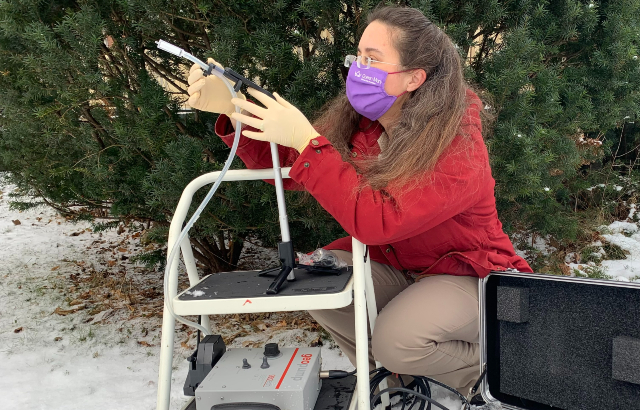-
Welcome to BirdForum, the internet's largest birding community with thousands of members from all over the world. The forums are dedicated to wild birds, birding, binoculars and equipment and all that goes with it.
Please register for an account to take part in the discussions in the forum, post your pictures in the gallery and more.
You are using an out of date browser. It may not display this or other websites correctly.
You should upgrade or use an alternative browser.
You should upgrade or use an alternative browser.
New Ivory-billed Woodpecker info (2 Viewers)
- Thread starter MikeInPA
- Start date
More options
Who Replied?temmie
Well-known member
A well written article, but unfortunately no conclusive evidence.
I'll resume:
7 'definite' observations but not one with photographic evidence.
No conclusive audio recordings.
Trail camera images (too) poor.
All 'evidence' is 'suggestive'
Just one good picture could have saved a lot of time writing articles based on suggestive evidence. I understand people behind the article already spend a lot of time, just to come up with vague pictures and videos. I understand the terrain is challenging, but the reasoning "because of the endangered status of the species and ongoing research concerns, we omit specific location details." isn't going to help discover the species.
What's the logic behind hiding the potentially best locations for birders (lots of them carrying cameras that take better shots in the dark than any of the so-called evidence in the article)?
I'll resume:
7 'definite' observations but not one with photographic evidence.
No conclusive audio recordings.
Trail camera images (too) poor.
All 'evidence' is 'suggestive'
Just one good picture could have saved a lot of time writing articles based on suggestive evidence. I understand people behind the article already spend a lot of time, just to come up with vague pictures and videos. I understand the terrain is challenging, but the reasoning "because of the endangered status of the species and ongoing research concerns, we omit specific location details." isn't going to help discover the species.
What's the logic behind hiding the potentially best locations for birders (lots of them carrying cameras that take better shots in the dark than any of the so-called evidence in the article)?
DMW
Well-known member
Even if this was the optimum method, which I'm certain it isn't, encouraging people to go out into remote swamp forest, climb trees and collect debris from Woodpecker nests seems somewhat foolhardy, not to mention a recipe to disturb wildlife.I am still convinced that DNA is the route to go down. These are hole nesting birds. A campaign to get out into suitable habitat, climb some trees and sample the debris will lead much more actual science that canoeing around with a camera strapped to one's head.
No need to climb trees. Just use environmental DNA...Even if this was the optimum method, which I'm certain it isn't, encouraging people to go out into remote swamp forest, climb trees and collect debris from Woodpecker nests seems somewhat foolhardy, not to mention a recipe to disturb wildlife.
Farnboro John
Well-known member
I am still convinced that this bird is extinct.
John
John
Frank van Drogen
Not so important

I am still convinced that this bird is extinct.
John
I have not seen any data that contradicts that hypothesis.
But, since it is impossible to proof the absence of a species, we'll probably continue seeing articles and the like claiming evidence of the existence of IBW.
Andy Adcock
Worst person on Birdforum

Leave 50, strategically placed trail cams for three months?Even if this was the optimum method, which I'm certain it isn't, encouraging people to go out into remote swamp forest, climb trees and collect debris from Woodpecker nests seems somewhat foolhardy, not to mention a recipe to disturb wildlife.
No. Just sample e DNA. End ofLeave 50, strategically placed trail cams for three months?
Not sure it would easily work for an "allegedly" extant but extremelly rare species.No. Just sample e DNA. End of
Why not? It does for definitely extant but extremely rare species...Not sure it would easily work for an "allegedly" extant but extremelly rare species.
Andy Adcock
Worst person on Birdforum

Where will you aquire it, I thought we were looking for a non, intrusive approach?No. Just sample e DNA. End of
Andy Adcock
Worst person on Birdforum

Thanks, just read a bit about the method which seems to be limited to water borne DNA deposits, how can that be used to look for a 'rare' at the most optimistic, Woodpecker?
X-MOL
www.x-mol.net
Nope... E.g.seems to be limited to water borne DNA deposits

DNA from air could revolutionize the way we measure animal biodiversity, say scientists
Two independent research groups detect the presence of animals by collecting DNA from air
www.qmul.ac.uk
jurek
Well-known member
They really need to invest in higher resolution cameras, and place them closer, so that when the bird shows itself, it will be good and unequivocal picture.
They could look for sponsorship of some TV channel, or trailcam manufacturer.
Environmental DNA from tree holes makes sense. It would be a legit ecological research on its own right, completely possible to find a sponsor. Do not mention the Ivory-billed Woodpecker at all. Study what species use tree holes, are old hollow trees critical, are all holes equally valuable for wildlife etc. Lots of important questions with big impact on conservation and forestry.
Users who are viewing this thread
Total: 3 (members: 0, guests: 3)







